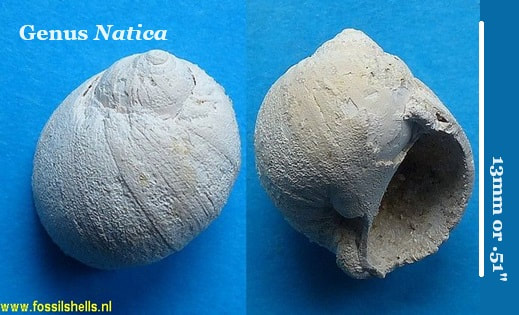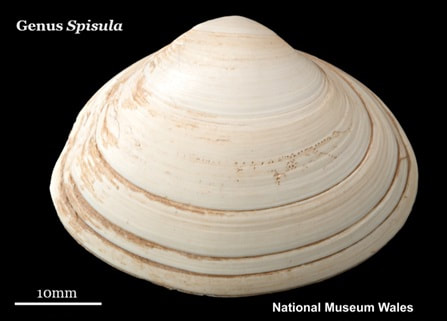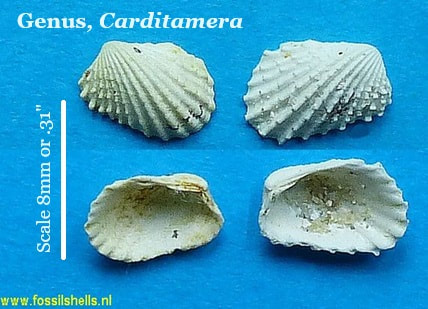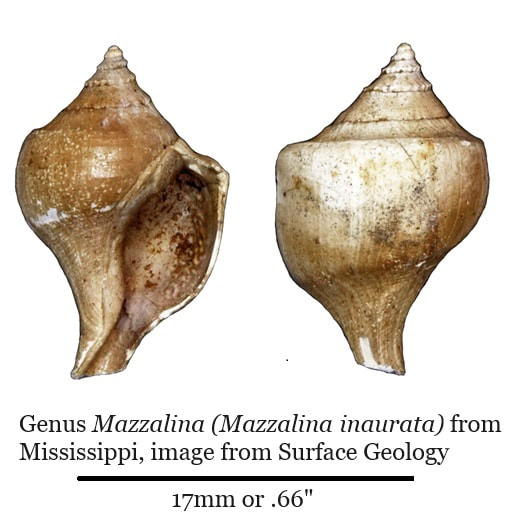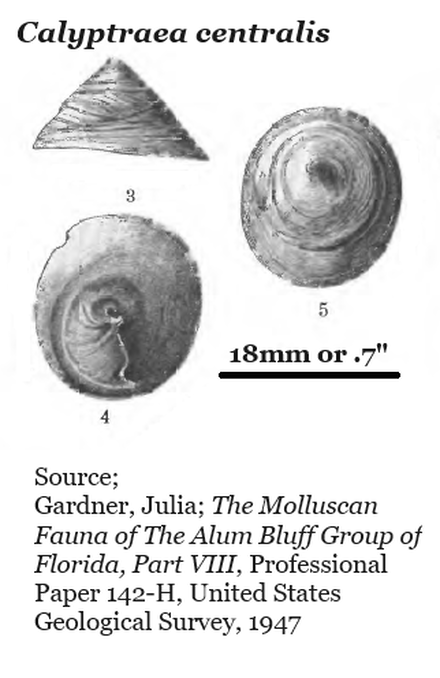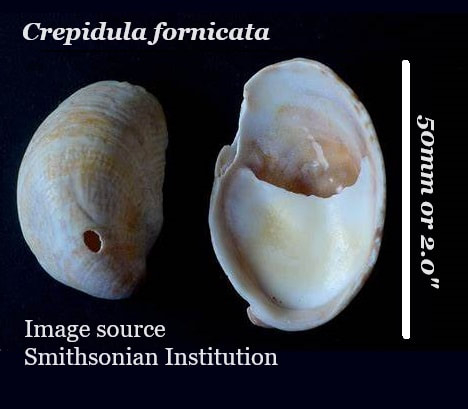In 1920, after service in WWI as an auxiliary nurse, Julia Gardner (1882-1960) became one of the few working female geologists with the USGS (US Geological Survey). She was 38 years old when she joined the USGS and would continue her work for 32 years.
Amazingly, she’d earned her PhD in paleontology in 1911 and was first published in 1916. Wikipedia states: “She was known worldwide for her work in stratigraphy and mollusk paleontology.” No small feat for a Victoria Era woman from South Dakota. She must have been remarkable and was certainly a trailblazer towards women in the STEM fields today.
Julian Gardner history, Paleontological Research Institution
Julia Gardner — Museum of the Earth
Julia Gardner History, Wikipedia
Julia Anna Gardner - Wikipedia
Julia Gardner — Museum of the Earth
Julia Gardner History, Wikipedia
Julia Anna Gardner - Wikipedia
She was not the lone woman at the USGS. She joined the USGS at about the same as Eleanora Bliss Knopf & Anna I. Jonas Stose, and the three became friends & allies in a workplace that could likely be very challenging.
From 1926 through 1947 Gardner identified at least six new species which occur in both Georgia and Florida. She published 4 large papers over mollusks and gastropods of the Alum Bluff group of formations in the southwest corner of our state and much of Florida. All the Georgia species came from four exposures along a (now abandoned) 3.5 miles of railway southeast of Bainbridge.
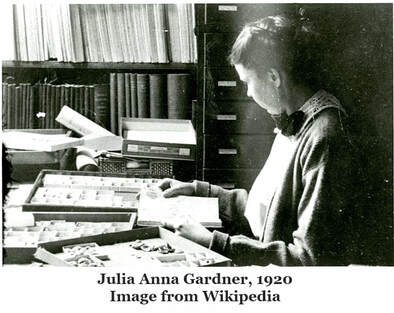
These sites seem lost, at least the author failed to locate them in February of 2024, but encourages locals to have a look. As “the author” I admit that my health at the time wasn’t what it should have been, so my range was limited and my exploration wasn’t thorough. (My health is better today.)
The locations were mapped by Gardner in 1926 (see below) and described in 1911 by Stephenson & Veatch during their Coastal Plain research for the USGS and State of Georgia.
The locations were mapped by Gardner in 1926 (see below) and described in 1911 by Stephenson & Veatch during their Coastal Plain research for the USGS and State of Georgia.
The fossils Gardner studied were collected in 1926 (or prior), placed in the collections at the United States National Museum (Smithsonian), and over the next 20+ years she reviewed them to meet the contemporary understanding of gastropod taxonomy.
Collectively remembered as Gastropod Gulch, these sites are on the northern face of the Pelham Escarpment, a worn old ridgeline created by deep ancient faults. Locally, the Pelham Escarpment rises to 290ft above sea level. Downtown Bainbridge is at the base of the escarpment, at an elevation of 125 to 130 feet above sea level, all of the sites are uphill to the south, as you climb the escarpment. The individual sites include two ravines and a field with scattered boulders.
Collectively remembered as Gastropod Gulch, these sites are on the northern face of the Pelham Escarpment, a worn old ridgeline created by deep ancient faults. Locally, the Pelham Escarpment rises to 290ft above sea level. Downtown Bainbridge is at the base of the escarpment, at an elevation of 125 to 130 feet above sea level, all of the sites are uphill to the south, as you climb the escarpment. The individual sites include two ravines and a field with scattered boulders.
Georgia Localities (as numbered) from Julia Gardner
Northernmost locality at top.
#3386; Roseland Plantation
Northernmost locality at top.
#3386; Roseland Plantation
- 137 ft elevation
- 3.5 miles southeast of Bainbridge
- 140ft elevation
- 4 miles southeast of Bainbridge
- 190 ft elevation
- 5.5 miles southeast of Bainbridge
- 290ft elevation
- 7 miles southeast of Bainbridge
Dating, Age of the Sediments
The fossils are roughly 21 million years old.
Gardner placed all the Georgia fossils in the Oak Grove Sand Formation of the Alum Bluff Group and dated that to the Miocene Epoch. I spoke to Paul Huddlestun on 19/January/2024 about the stratigraphy Gardner used in 1926.
During his 1980s research in the area Mr. Paul reassigned many of these sediments. He explained that her locations were on the northern edge of the Pelham Escarpment and likely part of the Dogtown Clay member of the Torreya Formation. The Dogtown Clay is in the uppermost Torreya Formation.
The Miocene Epoch spans from 5 million to 23 million years ago. The Torreya Formation falls into the Aquitanian Stage of the Miocene Epoch. The Aquitanian Stage spans from 20 to 23 million years ago. The Dogtown Clay is in the uppermost Torreya Formation so it’s probably around 21 million years old.
The fossils are roughly 21 million years old.
Gardner placed all the Georgia fossils in the Oak Grove Sand Formation of the Alum Bluff Group and dated that to the Miocene Epoch. I spoke to Paul Huddlestun on 19/January/2024 about the stratigraphy Gardner used in 1926.
During his 1980s research in the area Mr. Paul reassigned many of these sediments. He explained that her locations were on the northern edge of the Pelham Escarpment and likely part of the Dogtown Clay member of the Torreya Formation. The Dogtown Clay is in the uppermost Torreya Formation.
The Miocene Epoch spans from 5 million to 23 million years ago. The Torreya Formation falls into the Aquitanian Stage of the Miocene Epoch. The Aquitanian Stage spans from 20 to 23 million years ago. The Dogtown Clay is in the uppermost Torreya Formation so it’s probably around 21 million years old.
Veatch & Stephenson 1911
Gardner’s 1926 work was following-up on the 1911 field report by Veatch & Stephson. The 1911 paper resports that the name Gastropod Gulch was coined in an October 1893 research paper by Dr. A. F. Foerste published in the American Journal of Science (Vol.16, Pg 245-254). Where Gardner identified 4 closely related locations, the 1911 paper describes two localities.
Gardner’s 1926 work was following-up on the 1911 field report by Veatch & Stephson. The 1911 paper resports that the name Gastropod Gulch was coined in an October 1893 research paper by Dr. A. F. Foerste published in the American Journal of Science (Vol.16, Pg 245-254). Where Gardner identified 4 closely related locations, the 1911 paper describes two localities.
Campbell Hill @ Roseland Plantation
Genus Pleurotoma Gastropod-Snail
Pleurotoma servata Gastropod-Snail
Crucibulum auricula Gastropod-Snail
Natica alticallosa Gastropod-Snail
Fulgur spiniger Gastropod-Snail
Omphalius exoletus Gastropod-Snail
Melongena Gastropod-Snail
Fissuridea Gastropod-Snail
Latirus Gastropod- Snail
Arca staminata Bivalve-Clam
Nassa Gastropod-Snail
Astyris Gastropod-Snail
Spisula Bivalve-Clam
Strigilla Bivalve-Clam
Bittium Gastropod-Snail
Venus Bivalve-Clam
Serpulorbis Gastropod-Snail
Carditamera Bivalve-Mollusc
- The hill is composed of reddish and yellowish, residual sands. At the northeast corner of the hill, immediately west of a small ravine, a pile of yellowish, reddish, or whitish, siliceous sandstone, rich in fossils, was found. The fossils collected here belong to the same horizon as those in Judge Bowers' and Sam Dickson's fields.
Genus Pleurotoma Gastropod-Snail
Pleurotoma servata Gastropod-Snail
Crucibulum auricula Gastropod-Snail
Natica alticallosa Gastropod-Snail
Fulgur spiniger Gastropod-Snail
Omphalius exoletus Gastropod-Snail
Melongena Gastropod-Snail
Fissuridea Gastropod-Snail
Latirus Gastropod- Snail
Arca staminata Bivalve-Clam
Nassa Gastropod-Snail
Astyris Gastropod-Snail
Spisula Bivalve-Clam
Strigilla Bivalve-Clam
Bittium Gastropod-Snail
Venus Bivalve-Clam
Serpulorbis Gastropod-Snail
Carditamera Bivalve-Mollusc
Gastropod Gully, Bowers' Land
Conus planiceps Gastropod-Snail
Crepidula Gastropod-Snail
Pleurotoma Gastropod-Snail
Crucibulum auricula Gastropod-Snail
Marginella Gastropod-Snail
Natica alticallosa Gastropod-Snail
Turbinella Gastropod-Snail
Fulgur spiniger Gastropod-Snail
(2 undetermined gastropods)
Mazzalina Gastropod-Snail
Arca staminata Bivalve-Clam
Melongena Gastropod-Snail
Murex Gastropod-Snail
Lindapecten chipolanus Bivalve- Scallop
Nassa (Chippola species) Gastropod-Snail
Spondylus Bivalve-Clam
Latirus Gastropod-Snail
Siphcyprarea carolinessis floridana Gastropod-Snail
Bittium Gastropod-Snail
Mactra Bivalve-Clam
Turritella indenta Gastropod-Snail
Turritella alcida Gastropod-Snail
Turritella other species Gastropod-Snail
Tellina Bivalve-Clam
Solarium granulatum Gastropod-Snail
- This gully is on Judge Bowers' land, east of Roseland plantation. It is 12 to 15 feet deep with almost perpendicular walls. The sides are composed of yellowish sands and of bluish clayey sands blotched with yellow. Bits of siliceous material are common and residual pieces of usually yellowish apparently silicified sandstones are abundant. Near the head of the gully it is shallower, and the residual sandstone is strewn promiscuously over the surface. Most of the fossils were found here. The gully is only about two hundred yards long. Gastropod Gully is therefore, according to aneroid barometer readings, 85 feet above the level of Bainbridge at Hotel Wainman.
Conus planiceps Gastropod-Snail
Crepidula Gastropod-Snail
Pleurotoma Gastropod-Snail
Crucibulum auricula Gastropod-Snail
Marginella Gastropod-Snail
Natica alticallosa Gastropod-Snail
Turbinella Gastropod-Snail
Fulgur spiniger Gastropod-Snail
(2 undetermined gastropods)
Mazzalina Gastropod-Snail
Arca staminata Bivalve-Clam
Melongena Gastropod-Snail
Murex Gastropod-Snail
Lindapecten chipolanus Bivalve- Scallop
Nassa (Chippola species) Gastropod-Snail
Spondylus Bivalve-Clam
Latirus Gastropod-Snail
Siphcyprarea carolinessis floridana Gastropod-Snail
Bittium Gastropod-Snail
Mactra Bivalve-Clam
Turritella indenta Gastropod-Snail
Turritella alcida Gastropod-Snail
Turritella other species Gastropod-Snail
Tellina Bivalve-Clam
Solarium granulatum Gastropod-Snail
Coastal Plain Limestones & Marls
In 1916 J. E. Brantly published a paper on Georgia’s Coastal Plain limestones and marls. A “marl” is a carbonate rich mud, lime a limestone mud. Brantly did not mention Gastropod Gulch in his report, the fossils we’re reviewing are in sandy clay and cherts, so the gastropods weren’t in the scope of his research. However, he does mention limestone exposures in Decatur County which would certainly be worth investigating and he offers descriptions of several Pleistocene sand beds which might yield fossils.
In 1916 J. E. Brantly published a paper on Georgia’s Coastal Plain limestones and marls. A “marl” is a carbonate rich mud, lime a limestone mud. Brantly did not mention Gastropod Gulch in his report, the fossils we’re reviewing are in sandy clay and cherts, so the gastropods weren’t in the scope of his research. However, he does mention limestone exposures in Decatur County which would certainly be worth investigating and he offers descriptions of several Pleistocene sand beds which might yield fossils.
Women in Science
This page celebrates the achievements of Dr. Julia Gardner and honors the place she carved out in science. Her work in Florida and Georgia has secured her seat in history in a time when women were rarely encouraged towards science. Since her work, more women have found the door to a career in science open. But there is more work to do, the door isn't opened as wide as it should be.
As a society, and certainly as a species, we can’t afford to dismiss or minimize the talents or gifts of any one of us, no matter their sex, race, religion, or self-identity. We are one species, we must set aside our biases and work together so that all will prosper.
This page celebrates the achievements of Dr. Julia Gardner and honors the place she carved out in science. Her work in Florida and Georgia has secured her seat in history in a time when women were rarely encouraged towards science. Since her work, more women have found the door to a career in science open. But there is more work to do, the door isn't opened as wide as it should be.
As a society, and certainly as a species, we can’t afford to dismiss or minimize the talents or gifts of any one of us, no matter their sex, race, religion, or self-identity. We are one species, we must set aside our biases and work together so that all will prosper.
Fossils Gardner reported in Georgia
Fossils Gardner reported in Georgia
Anomia suwanneensis
- New species identified by Julia Gardner in this publication (1926).
- Appears in Part 1
- Shell nacreous, chalky white or talcose, very large for the group, the left valve warped into a moderate convexity, suborbicular in outline. Umbones inconspicuous, scarcely interrupting the normal curvature of the valve; the tips of the umbones set just within the margin. External surface smooth except for concentric lamination, most distinct toward the ventral margin. Ligmuent mounted on very low, shelly crests, n1ost elevated distally; ligament scar broadly conic or horseshoe-shaped, the apex of the cone directly beneath the umbones, the cardinal margin arching over it; ventral margin of scar concave; lateral margins not elevated. Hinge edentulous; cardinal area indicated by a thickening of the margin, the component layers showing up in cross section. Scarred area ovate to spatulate, widening ventrally, the outer layer retaining the impressions broken away in all available material.
- Altitude, 45.0 ± millimeters; latitude, 52.0 millimeters; diameter (left valve), 14.0 millimeters.
- This large form suggests Garolia. Unfortunately, the best diagnostic generic characters have not been preserved. Only the left valve has been collected, which indicates that the right valve is thin and delicate, like that of Anomia rather than that of Garolia. The ligament attachment of the right valve and the foraminal characters are consequently unknown. The area that encloses the adductor and byssal scars is elongated dorsoventrally, the characteristic outline in Anomia, though the individual scars have not been observed. In Garolia there is a single subcircular adductor scar nearly central in position. The species is much the largest of the genus that has been reported from the Alum Bluff. One individual from the type locality exhibits a fortuitous radial threading in the umbonal region.
- 3385; Gastropod Gulch 1
Architectonica quadriseriata waltonensis
Description
Description
- Architectonic quadriseriata is represented in the Oak Grove fauna of both Florida and Georgia by still another unnamed subspecific race. It is characterized by a more subdued sculpture than that which ornaments A. quadriseriata s. s. Both on the apical and basal surfaces the spirals are similar in number and arrangement to those of the species s. s., but in the Oak Grove subspecies the incremental sculpture is relatively feeble, and instead of dissecting the spirals into a series of sharply rounded beads it cuts them into squarish or oblong areas that seem from the somewhat oblique undercutting to overlap one another like tiles on a roof. The incrementals are also less persistent in the Oak Grove subspecies and evanesce anteriorly as early as the fifth whorl, leaving the anterior and peripheral spirals simple. The basal sculpture is similar in both the species s. s. and the subspecies, though the spirals are less deeply dissected in the subspecies. A. quadriseriata (Sowerby) subsp. is intermediate in sharpness of sculpture between species from the Bowden beds of Jamaica and the subspecies from the Shoal River formation, which is characterized by a relatively subdued and flattened ornamentation. The form is rare even at the single horizon at which it is represented.
- Dimensions of holotype (a slightly imperfect specimen): Height, 14 millimeters; maximum diameter, 26 millimeters.
- 3385; Gastropod Gulch 1
- 7148; Gastropod Gulch 2
Calyptraea centralis
Description
Description
- Shell rather small, capuloid or conic. Apex central. Nucleus glassy, of one and one-half volutions, the initial half turn largely immersed, the succeeding whorl coiled in the same horizontal plane but more inflated and rapidly increasing in diameter. Axis of coiling of conch at a high angle to that of protoconch. Lateral slope steeper in the apical region, rather abruptly flattening a third or a half of the way to the periphery. Surface smooth except for swirling incrementals. Outline of free margin of diaphragm sigmoidal, deeply and narrowly situated near the periphery but arching forward between the sinus and the reverted inner edge of the septum. This species is well marked by a sort of umbilicus on the pillar, where it is reflected, and by the arching forward of the free edge of the septum, characters which have been exactly preserved since the early Miocene. The only modification visible during the whole of that period, as represented by a full series of specimens, is a slight increase of size from the early to the later Miocene, and a slight average decrease since, the Recent specimens being about the size of those from the Chipola beds, while those from the Natural Well, Duplin County, are the largest. The differences, however, are not great, and may be accidental to- the particular locality rather than characteristic of chronological changes. Dall, 1892.
- The figured individual, from St. Marys Eiver, Maryland, is in the Aldrich collection of Johns Hopkins University. It measures 10 millimeters in height and 18 millimeters in maximum diameter.
- 3385; Gastropod Gulch 1
- 7148; Gastropod Gulch 2
Cardita (Carditamera) apotegea
- New species named in 1926 by Julian Anna Gardner
- Appears in Part 2
- Described as Cardita tegea by Dall in 1903, reassigned by Gardner as new species.
- Dall’s C. tegea description; Shell elongate inequilateral, with low, rather anterior beaks and about 16 strong radial more or less carinated and imbricated ribs, the anterior ribs more distinctly and regularly crenulate, the posterior more irregular; the interspaces about as wide as the ribs, and on the anterior half of the shell squarely channeled; posterior end of the shell produced and pointed, anterior end rounded, base mesially slightly concave; lunule small, deeply impressed, the anterior lateral tooth very prominent; hinge teeth normal, rather slender; inner margins of the valves deeply fluted. Length 43, height 24, diameter 22 millimeters. The beaks are situated at about the anterior sixth of the shell. The original figure of this species in Part I was taken from a silicious pseudomorph, which perhaps had been derived from a specimen which had been somewhat worn before being fossilized. Though certainly identical with the Chipola specimens from which the description is written, the sculpture is less well preserved and smoother. Dall's description was made for the most part from the specimens from Chipola River, though his type locality is Ballast Point. The earlier species is more elongated transversely than 0. apotegea and probably never attains so great a size. The radials are more commonly 17 or 18 in number than 16. From the anterior margin to the posterior keel, they gradually increase in prominence and become less and less closely spaced. There is a gradual transition, too, from the nodose incremental sculpture of the anterior area to the posterior sculpture, characterized by exceedingly fine incremental striae and, especially in the young forms, by here and there a spinose process. There are generally two or three subequal costals which radiate from the umbones to the posterior basal angle, and which are coarser and more distantly spaced than any others upon the shell. Behind them, in most individuals, are two relatively fine lirae and behind these a costal almost as- coarse and as spiny as those outlining the posterior angle. The marginal rib is also spinose but not so coarse as that next to it. The costals are all of them abruptly arched and form sharp angles with flattened interspaces. The muscle impressions are large and very distinct, though united by an obscure pallial line. The figured specimen from Ballast Point, which serves as the type of 0. Tegea.
- 33.0 millimeters in latitude and 16 millimeters in altitude with a semidiameter of 5.5 millimeters. Dimensions of right valve: Altitude, 23.5 millimeters; latitude, 41.0 millimeters; semidiameter, 11.3 millimeters. Dimensions of left valve of another specimen: Altitude, 22.5 millimeters; latitude, 40.0 millimeters; semidiameter, 11.3 millimeters.
- Oak Grove Sand
- 3385; Gastropod Gulch 1
- 7148; Gastropod Gulch 2
- 3386; Roseland Plantation
Chlorostoma (Omphalius) exolutum
Description
Description
- Depressed; volutions slightly convex, with revolving lines, most prominent on the periphery and base; 7 or 8 lines on the base increasing in size towards the umbilicus, which is profound; labrum with a series of minute short prominent irregular lines on the inner submargin; tooth at base of columella small, transverse, somewhat compressed; beneath is a smaller pyramidal tooth; aperture round, more than half the length of the shell.
- Shell nacreous within, solid, depressed, more or less irregularly trochiform. Whorls approximately 4. Peripheral carina obscure, evanescent toward the aperture. Surface spirally threaded. Lirations simple, linear, separated by wider interspaces, 4 to 7 on the ultima behind the periphery, 7 or 8 on the base. Occasional fortuitous secondaries introduced. Incrementals commonly conspicuous, obliquely intersecting the spirals in a line approximately parallel to the margin of the outer lip. Suture distinct, not coincident with the peripheral angle of the preceding whorl in all individuals but in some a little in front of it. Aperture holostomons, subcircular. Labrum sharp, broadly arcuate. Labium solid, strongly concave, bidenticulate anteriorly, the posterior tooth the stronger. Parietal wall heavily glazed. Umbilicus persistent to the apex of the spire.
- Height, 12 millimeters; maximum diameter, 13 millimeters.
- 3386; Roseland Plantation
Crepidula fornicata
Description
Description
- Shell ovate or oblong, varying widely in degree of convexity. Apex posterior, submarginal. Nucleus small, smooth, polished, of one and one-half or two dextrally inclined volutions. Sculpture absent except for incrementals. Internal lamina flattened or slightly concave, covering, as a rule, a little more than the posterior half of the aperture. Free edge of septum concave or loosely sigmoidal. Like all perching forms, Crepidula fornicata is exceedingly variable in outline. It is isolated from the co-existent species by the absence of characters diagnostic of other forms rather than by the presence of constant characters of its own. Crepidula aculeata costata Morton develops an axial sculpture; Crepidula plana Say runs much smaller than C. fornicata and is flattened or concave rather than convex. The recent Crepidula, convexa Say is similar in absence of sculpture and outline but is characterized by the straight margin of the septum. Crepidula fornicata is the most common of the "slipper" or "boat" shells of the east coast. Indeed, so abundant are these "quarter-decks," as they are called in trade, that they have a commercial value and are sold to the oyster growers for four or five cents a bushel to serve as "clutch" for the oyster spat.
- Length 2 inches (Say, 1822)
- 3385: Gastropod Gulch 1
- 7148: Gastropod Gulch 2
- Recent: Prince Edward Island to the West Indies in 2 to 19 fathoms
Crucibulum multilineatum
Desciption
Desciption
- Shell small, capuloid, moderately low, subcircular or elliptical in basal outline. Protoconch dextral, performing two-minute volutions in a single plane. Radial sculpture variable, usually 15 to 20 cordate costae originating a short distance away from the apex and obliquely radiating from it, some or all of which bear minute tubular spines; secondary radials commonly ramifying and intersecting the primaries at an angle of 10° to 25°. Inner cup adherent posteriorly over about a third of its, surface; dextral portion of free margin contracted with a peculiar, characteristic little kink.
- Cruoibulum multilineatum is readily isolated from the other members of the section characterized by the adherent cup, by the spinose, more or less oblique primary radials, the ramose secondary radials, and the diagnostic contraction of the posterior portion of the inner cup. The species is fairly widespread through the Oak Grove and Shoal River.
- The individual figured (Johns Hopkins University) is from the Choptank formation at Jones Wharf, St. Marys County, Md. It is 7 millimeters high and 30 millimeters in diameter.
- 3386, Roseland Plantation
- 3385, Gastropod Gulch 1
- 7148, Gastropod Gulch 2
Diluvarca santarosana
- Formerly Scapharca santarosana & Arca santorosana
- Appears in Part 1
- Plate VI, Figures 1-2
- Shell small, short, plump, rostrate, with moderately elevated, mesially sulcate prosocoelous beaks; left valve with 30 elevated, squarish, radial ribs, separated by slightly narrower channeled interspaces; the ribs on the posterior slope are low, smaller, and nearly smooth; those on the middle of the shell have mostly near the margin a shallow mesial sulcus; in those still more anterior the sulcus is deeper and wider, dividing each rib over most of its length into two more or less rounded riblets; concentric sculpture of regularly spaced elevated lines, which on the ribs appear as prominent ripples; right valve having the ribs narrower and less strongly sculptured, and the sulci less distinct; cardinal area short, with about three concentric grooves; beaks within the anterior fourth; hinge line with about 57 rather irregular, closely adjacent, nearly vertical teeth, longer and more oblique distally; margins strongly fluted; base flexuous, posterior end narrow, pointed, without any marked angle at the end of the hinge line.
- Longitude 36.5, altitude 28, diameter 28 millimeters.
- This species is most nearly related to A. staminata Dall, from which it can be distinguished especially by its lower beaks, more oblique posterior slope, more flexuous base, and attenuated posterior end.
- Localities
- 3385; Gastropod Gulch 1
- 3386; Roseland Plantation
- 7148; Gastropod Gulch 2
- 3396; Sam Dickens’ Field
- The species that occurs abundantly in the vicinity of Bainbridge, Decatur County, Ga., is for the most part the typical D. santarosana, though there is a tendency toward variation along the lines of D. geraetera. Apparently a second species or subspecies is present at this locality, though represented only by immature forms. These individuals differ from the young D. santarosana in their much lower, broader outline. The ornamentation and cardinal area, however, offer no distinguishing characters, and the forms in question are left nameless for the time being.
- Oak Grove Sand
Diodora pumpellyi
Shell rather small for the group, moderately elevated, conic; the posterior slope a little more produced and consequently not so steep as the anterior; lateral slopes oblique, steeper than the anterior. Base ovate, little or not at all upcurved medially. Radials well elevated, well-rounded cords, alternating in size in the young, subequal in the adults, separated by linear interspaces, not far from 80 in number. Concentric sculpture finely laminar, closely spaced, overriding the radials; the interspaces between the radials and concentric laminae appearing, especially in the worn shells, as a series of minute pits. Foramen rather small, elongate, oval, slightly oblique to the axis. Interior concealed by the matrix.
Dimensions of holotype:
- New species decrsibed by Julia Gardner
- Holotype discovered and described from Gastropod Gulch 2
- Described in Part 4
Shell rather small for the group, moderately elevated, conic; the posterior slope a little more produced and consequently not so steep as the anterior; lateral slopes oblique, steeper than the anterior. Base ovate, little or not at all upcurved medially. Radials well elevated, well-rounded cords, alternating in size in the young, subequal in the adults, separated by linear interspaces, not far from 80 in number. Concentric sculpture finely laminar, closely spaced, overriding the radials; the interspaces between the radials and concentric laminae appearing, especially in the worn shells, as a series of minute pits. Foramen rather small, elongate, oval, slightly oblique to the axis. Interior concealed by the matrix.
Dimensions of holotype:
- Height, 7.4 millimeters; length of base, 12.5 millimeters; maximum width of base, 8.8 millimeters.
- 3386; Roseland Plantation
- 3385;Gastropod Gulch 1
- 3396; Sam Dickens’ Field
- Holotype: 7148; Gastropod Gulch 2,
- 5.5 miles SE of Bainbridge, Decatur County, GA
Polinices (Neverita) eucallosus
Height, 24.7 mm; max diameter 26.5 mm
Georgia Occurrence
- New Species described by Julia Garden in this paper (Part 4, 1947)
- Shell moderately large, low, turbinate. Whorls 5 or 6, closely appressed, rapidly enlarging, those of the spire very low and partially concealed by the embracing body whorl. Periphery of body evenly rounded. Surface smooth except for incremental striations, which are least feeble near the posterior suture and in the umbilical region. Suture lines distinct, a little impressed. Aperture large, slightly patulous anteriorly, auriculate in the adults, semi-elliptical in the young. Outer lip thin and sharp, strongly but asymmetrically arcuate, overlapping the inner posteriorly and cut off from the parietal callus by a shallow groove. Columella feebly concave. Body wash heavy, particularly at the posterior commissure; the margin of the enamel slightly contracted about halfway between the suture and the umbilicus. Umbilical cavity completely filled with a flat, closely fitting pad.
Height, 24.7 mm; max diameter 26.5 mm
Georgia Occurrence
- 3386, Roseland Plantation
- 3385, Gastropod Gulch 1
- 7148, Gastropod Gulch 2
Turritella alcida bicarinata
- New subspecies described by Julia Gardner
- Description
- Shell rather large and heavy, of about 20 volutions. Nucleus paucispiral, similar to that of T. alcida. Whorls of conch bicarinate; the medial carina first to be developed, strongest on the earlier whorls, though persistent to the aperture; in the juvenile growth stage, the anterior carina less prominent than the medial, approximately equal to it in the adolescent, and more prominent in the adult. Inter-carinal area strongly concave; area between medial carina and posterior suture feebly concave; whorl abruptly contracted in front of the anterior carina. Periphery of body obtuse, with a suggestion of an angulation along the line which the suture would follow if produced. Surface, as in T. alcida, ornamented with 25 to 40 fine and crowded lirae, somewhat unequal in size. Sculpture on base similar to that on the spire, minutely crenulate; about half a dozen spirals less feeble than the rest, regularly spaced but increasingly crowded toward the axis. Incrementals, as in T. alcida,, strongly retractive posteriorly, approaching the vertical medially and anteriorly. Suture lines distinct but overhung by the carina of the preceding whorl. Aperture rudely quadrate. Outer lip obtusely angulated by the medial and anterior keels, retractive posteriorly as in T. alcida. Inner lip concave, reinforced. Parietal wall washed with a thin enamel.
- Height, 73 millimeters; maximum diameter, 19.5 millimeters.
- 3386; Roseland Plantation
- 3385; Gastropod Gulch 1
Turritella (Torcula) dalli
- New species described by Julia Gardner
- Only occurring in one Georgia location.
- The locality from which Conrad's type specimen was collected is Greensboro, Md. Martin 37 was doubtless correct in referring Conrad's type of T. terebriformis to T. variabilis var. alticostata. The Florida form differs from the Maryland species in its flatter whorls, sharper and more elevated primary sculpture, more accentuated incremental, and more shallow sutures. The initial whorl of the Chipola species is bulbous, the succeeding volution low and angulated at the periphery, and the early whorls of the conch smooth and gently rounded. In the Maryland species, on the other hand, the earliest whorl is small and obtuse and the succeeding turn rather slender and gently convex, the sculpture is initiated very early on the conch, certainly not later than the third volution and in the form of two subequal spirals symmetrically spaced between the sutures. The differences both in the general aspect and in the details of the sculpture seem sufficiently great to demand the separation of the northern and the southern races. Since the Maryland form received Conrad's name, a new one must be given to the Florida shell. The nuclear and early post-nuclear whorls of T'. dalli have been lost. The earliest remaining whorls are high and narrow with an obscure carinal lira set about two thirds the distance from the posterior to the anterior suture. In front of this slight keel, the whorl is feebly constricted. The second spiral to be introduced is that which revolves a little in front of the posterior suture. A third spiral is introduced during adolescence directly behind the anterior suture. On the adult whorls the sculpture is strong but rather simple. The carinal spiral of the juvenile whorls remains the strongest of the three and is crenated by the incrementals. The posterior spiral is usually double and less strongly crenate than that in front of it. Between them is a strongly concave medial area sculptured only with incrementals. The anterior spiral holds its position directly behind the suture and is overridden with fine lirae. The incrementals are sharp and sinuated; the axis of the sinus falls symmetrically on the concave area between the two strongest spirals. The sutures are deeply impressed. The base is broadly rounded and obscurely lirate. The aperture is subcircular and holostomous, the outer lip thin and sharp, not preserved entire. The inner margin is strongly concave, the parietal wash moderately heavy and widely spread, the pillar reinforced.
- Dimensions of incomplete holotype: Height, 55.5 millimeters; diameter, 19.0 millimeters. Dimensions of immature paratype: Height, 47.5 millimeters, diameter, 11.0 millimeters.
- 3385; Gastropod Gulch 1
Download Julia Gardner's Papers below
| gastropod_gulch_1.pdf | |
| File Size: | 22392 kb |
| File Type: | |
| gastropod_gulch_2.pdf | |
| File Size: | 25208 kb |
| File Type: | |
| gastropod_gulch_3_gardner.pdf | |
| File Size: | 13859 kb |
| File Type: | |
| gastropod_gulch_4.pdf | |
| File Size: | 9495 kb |
| File Type: | |
References
- Gardner, Julia; The Molluscan fauna of the Alum Bluff Group of Florida, Part I, Professional Paper 142-A, United States Geological Survey, 1926
- Gardner, Julia; The Molluscan fauna of the Alum Bluff Group of Florida, Part II, Professional Paper 142-B, United States Geological Survey, 1926
- Gardner, Julia; The Molluscan fauna of the Alum Bluff Group of Florida, Part III, Professional Paper 142-C, United States Geological Survey, 1926
- Gardner, Julia; The Molluscan Fauna of The Alum Bluff Group of Florida, Part VIII, Professional Paper 142-H, United States Geological Survey, 1947
- Veatch, Otto, and Stephenson, Lloyd William; Preliminary Report on the Geology of the Coastal Plain of Georgia, Bulletin 26, joint project; Georgia Geological Survey & United States Geological Survey, 1911
- Huddlestun, Paul F; A Revision of the Lithostratigraphic Units of the Coastal Plain of Georgia, The Miocene Through Holocene, Bulletin 104, Georgia Geologic Survey, 1988
- Veatch, Otto; Stephenson, Lloyd William; Preliminary Report on the Geology of the Coastal Plain of Georgia; US Geological Survey, Georgia Geological Survey, Bulletin 26, 1911
- Brantly. J.E. (Assistant State Geologist); A Report on the Limestones and Marls of the Coastal Plain of Georgia, Bulletin #21, Georgia Geologic Survey, 1916










